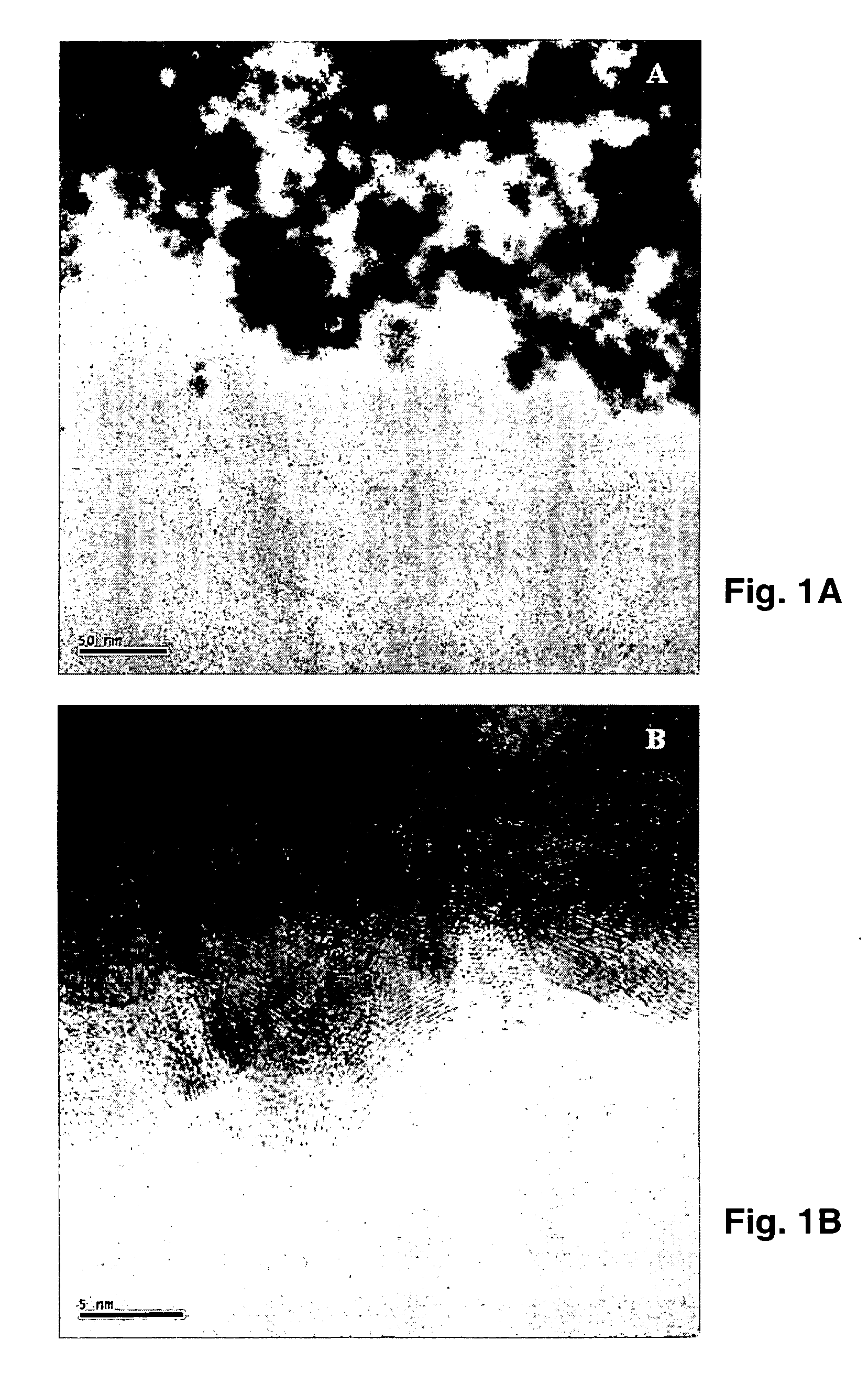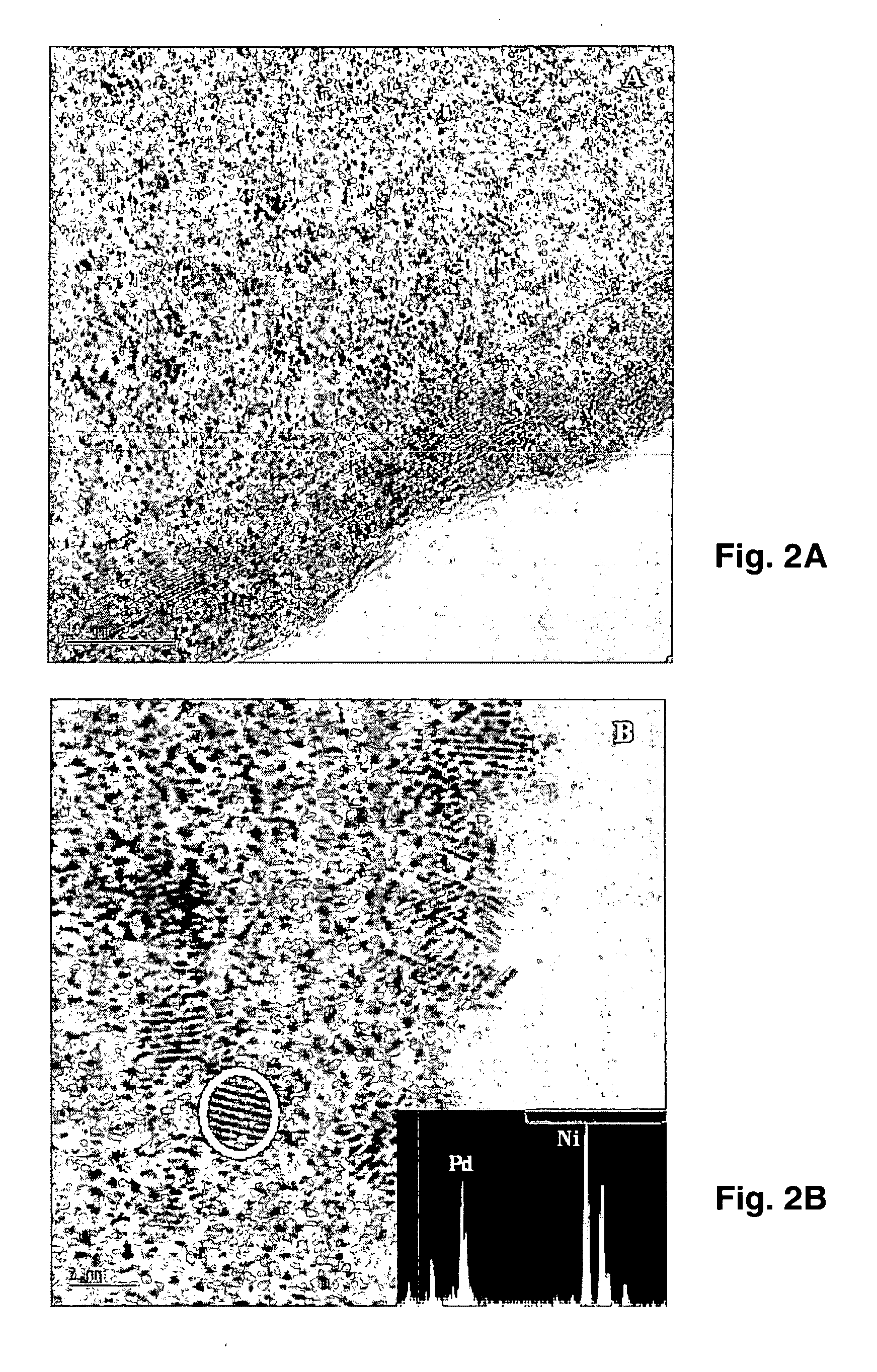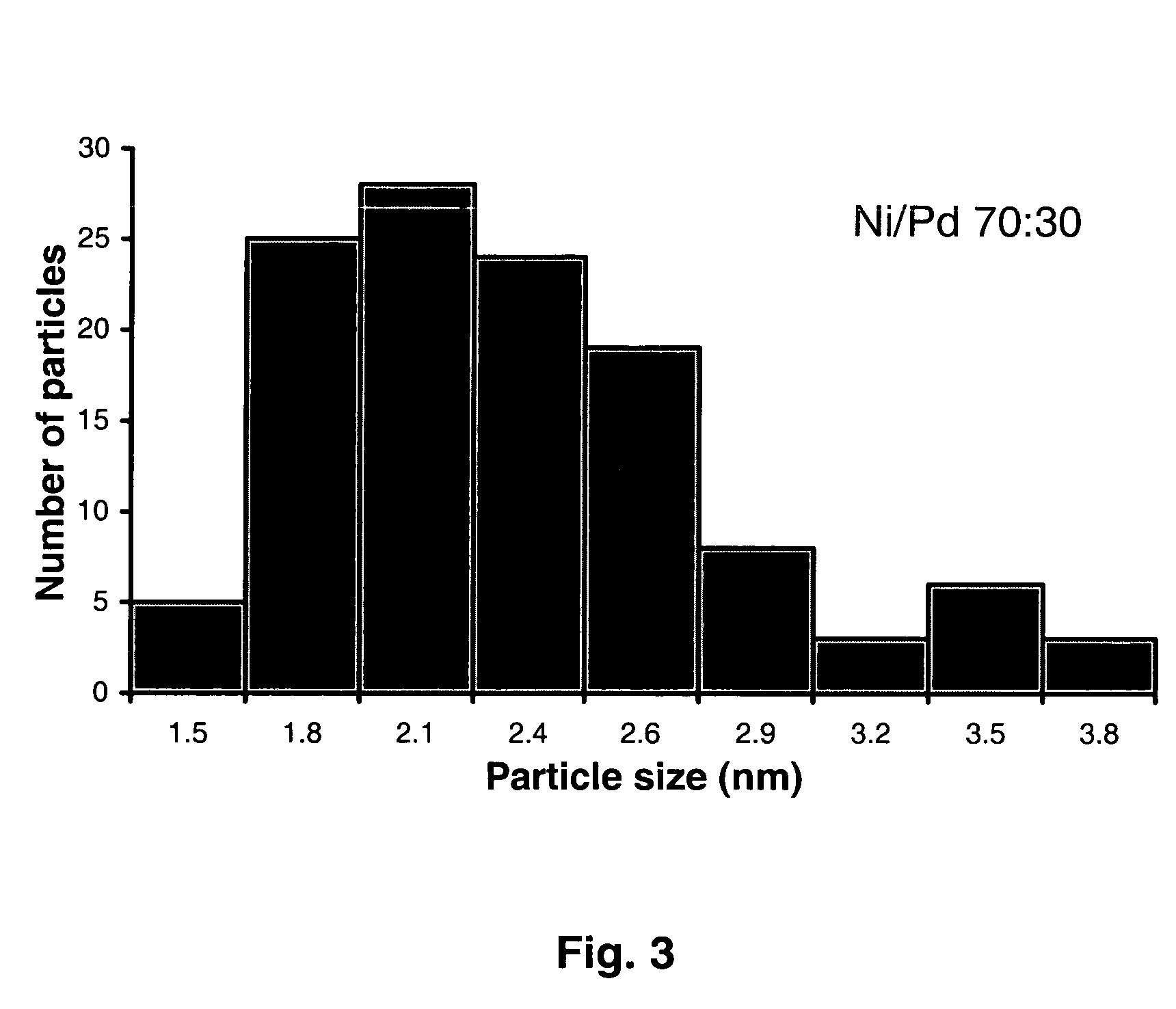Nanoparticle colloid, method for its production and its use in the growth of carbon nanotubes
a carbon nanotube and nanoparticle technology, applied in the field of nanoparticle colloid, can solve the problems of uniform carbon nanotubes, strong attachments, unsuitable applications such as display technology, etc., and achieve the effects of stable growth, stable against chemical degradation, and small siz
- Summary
- Abstract
- Description
- Claims
- Application Information
AI Technical Summary
Benefits of technology
Problems solved by technology
Method used
Image
Examples
Embodiment Construction
[0072] Lu et al (“Polymer-protected Ni / Pd bimetallic nano-clusters: preparation, characterization and catalysis for hydrogenation of nitrobenzene”, J. Phys. Chem. B 1999, 103, 9673-9682), the content of which is hereby incorporated by reference in its entirety, disclose a process for producing Ni—Pd bimetallic nanoparticles in colloidal form. In this document, palladium (II) acetate and nickel (II) sulphate were used as the starting materials. The palladium (II) acetate was dissolved in dioxane (15.6 mM Pd(Ac)2) and stirred for one day, resulting in a clear yellow solution. In a 1000 mL three-neck flask, PVP (polyvinylpyrrolidone) (4.006 g, 35.7 mmol in monomeric units, 14.3 times the total amount of metal ions in moles) and nickel (II) sulphate (NiSO4.7H2O) were dissolved in 600 mL of glycol at 80° C. To this solution, the dioxane solution of Pd(Ac)2 was added at 0-5° C., and pH values were adjusted to 9-11 by dropwise addition of an aqueous solution of sodium hydroxide (NaOH, 1 M)...
PUM
| Property | Measurement | Unit |
|---|---|---|
| Temperature | aaaaa | aaaaa |
| Temperature | aaaaa | aaaaa |
| Temperature | aaaaa | aaaaa |
Abstract
Description
Claims
Application Information
 Login to View More
Login to View More - R&D
- Intellectual Property
- Life Sciences
- Materials
- Tech Scout
- Unparalleled Data Quality
- Higher Quality Content
- 60% Fewer Hallucinations
Browse by: Latest US Patents, China's latest patents, Technical Efficacy Thesaurus, Application Domain, Technology Topic, Popular Technical Reports.
© 2025 PatSnap. All rights reserved.Legal|Privacy policy|Modern Slavery Act Transparency Statement|Sitemap|About US| Contact US: help@patsnap.com



